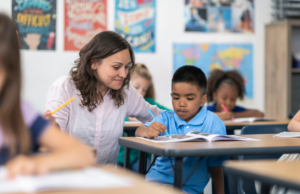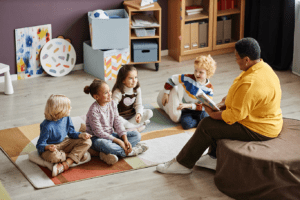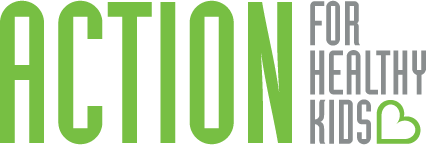
This guide gives brief definitions of commonly used acronyms in special education services.
504: A 504 plan helps children who need additional accommodations and/modifications, but do not qualify for an Individualized Education Program (IEP). A 504 plan is tailored to meet each individual child’s needs and may include things like a certain seating arrangement or extra time for tests.
AAC (Augmentative Alternative Communication): AACs are tools that help people communicate and may include things like pictures, hand signals, or special devices.
ASD (Autism Spectrum Disorder): ASD is a neurodevelopmental disorder that affects social interactions and communication and can include repetitive behaviors, sensory sensitivity, or very focused interests.
BIP (Behavior Intervention Plan): A BIP helps children with their behaviors in school. It is developed by a team that might include the family, teachers, a school psychologist, or other mental health professional. The plan is based on a functional behavior assessment (FBA) and includes a consideration of what happens before, during, and after challenging behaviors.
CST (Child Study Team): A CST is usually made up of the school psychologist, special education teacher, school counselors, and other specialists. Their goal is to gather information about a child’s needs and strengths and develop appropriate plans to support children’s academic, social-emotional, or behavioral needs.
ECSE (Early Childhood Special Education): ECSE is a specialized educational service provided to young children between the ages of birth to five years old with developmental delays, disabilities, or other special needs. The goal of ECSE is to prepare students for future educational success during this critical period of development.
FAPE (Free and Appropriate Education): FAPE is a term used to describe the educational services and supports that school districts are legally required to provide to students with disabilities under the Individuals with Disabilities Education Act (IDEA). These services and supports must be free to the student/family and must be tailored to meet their needs.
FBA (Functional Behavior Assessment): An FBA is a tool used to identify the cause of a child’s challenging behaviors. An FBA is usually conducted by a team of school staff that may include teachers, psychologists, and other student support staff. It usually is designed to better understand what happens before, during, and after a challenging behavior.
IDEA (Individuals with Disabilities Education Act): IDEA is a federal law that requires school districts to support the needs of all children, including children with disabilities.

IEP (Individualized Education Program): An IEP is a legal document developed for students with disabilities eligible for special education services. An IEP is a personalized plan that includes the student’s educational goals, services, accommodations, and modifications needed to support the student’s learning and address their unique needs. To learn more about the IEP process, see [Question List for School Meeting].
LD (Learning Disability): This is a term used to describe difficulties in how a person receives, retains, or communicates information. This may affect reading, writing, or math, reading, writing, or math.
LRE (Least Restrictive Environment): This describes part of the mandate from the IDEA and requires that students with disabilities are educated to the maximum extent appropriate with their non-disabled peers in the general education setting. This comes from a recognition that all children should have access to the same educational activities, opportunities, and settings.
OHI (Other Health Impaired) – OHI is a category of disability recognized under the IDEA. Students with an OHI eligibility typically have a chronic or acute health condition that affects their academic performance.

OT (Occupational Therapy or Occupational Therapist): Occupational therapy focuses on helping people develop their fine motor skills, sensory regulation skills, and skills for daily living. These activities might help children with things like handwriting, getting dressed independently, or navigating sensory experiences. An occupational therapist is someone who helps design the activities to help build those skills. In a school, an OT might work one-on-one with a student, or with a student’s teachers or family to develop other ways to support skill-building.
PBS (Positive Behavioral Supports): PBS is a proactive, evidence-based approach to managing challenging behaviors and promoting positive behaviors in students, including those with special needs. PBS focuses on understanding the causes of challenging behaviors and identifying and practicing alternatives behaviors.
PLAAF (Present Level of Academic Achievement and Functional Performance): A PLAAF is part of an IEP. The PLAAF is a snapshot of a student’s current academic achievement and functional performance in reading, writing, math, social skills, and more. It helps to determine what services and supports a student needs.
PT (Physical Therapy or Physical Therapist): Physical therapy focuses on strengthening a person’s ability to move and physically function. In a school, a physical therapist is someone who evaluates a child’s gross motor skills like strength, balance, coordination, and mobility and helps determine if the child needs assistive devices or mobility aids to participate in school activities.

SLP (Speech and Language Pathologist): An SLP assesses a person’s communication abilities, including how they form words and sounds and understand and express language. An SLP in a school might provide one-on-one or small group support to students, and may work with families and teachers to support the child’s communication development in and outside of school.
SW (Social Work or Social Worker): Social work helps individuals with social-emotional and behavioral issues. In a school, a Social Worker supports the social-emotional development of students by helping to create a supportive and inclusive environment for everyone. School social workers often work one-on-one or in small groups to help students with topics such as anxiety, peer conflict, and grief. They help to identify the causes of challenges at school including family issues, mental health concerns, or trauma and help to develop intervention plans to address those challenges.
